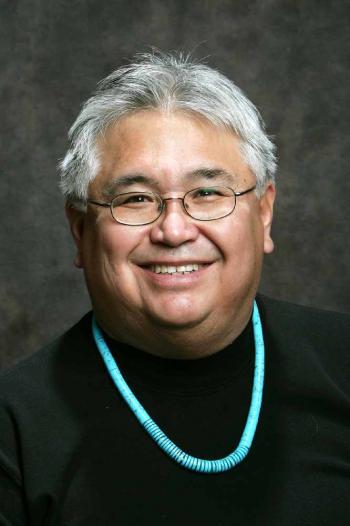Image Caption
Summary
Windspeaker.com Contributor
Audio
There could be some treasure in your attic, basement or storage room; maybe even tucked away on a closet shelf. The treasure is your family’s history in photos, documents or tape recordings. Save them. Preserve them. Protect them for future generations.
That’s what Bert Crowfoot is hoping people will do. He says that’s the bigger picture to what he’s been doing with the Digitizing the Ancestors project in partnership with the University of Alberta’s Institute for Sound Studies, headed up by director Mary Ingraham.
Crowfoot is the CEO of the Aboriginal Multi-Media Society of Alberta (AMMSA) and publisher of Windspeaker.com. As the society was being launched in the early part of the 1980s, he came across boxes of archives left behind by another Indigenous media group.
The Alberta Native Communications Society had been in operation since 1966 through 1982 when it closed up shop. The communication society worked in radio, television, film and had a newspaper.
The group amassed boxes and boxes of reel to reel recordings and cassette tapes, film and photos, which Crowfoot thought would be important to save.
Working with the provincial government, and chipping in a buck for their purchase, AMMSA gathered up the boxes and put them in a storage room for safe-keeping. He also tucked away a thought that one day there may be opportunity to share the material with others.
As a young not-for-profit in 1982 working to get established, with not a lot of money at hand for funding any other than core functions, those boxes remained in storage for decades waiting for that opportunity. They were moved three times as the society grew, going from one building to the next.
Through AMMSA board member Noel McNaughton’s work on another board, Crowfoot made a connection with Ingraham and the sound studio, and digitizing the stored material began.
“When Mary came and approached us, all of a sudden it’s kind of like a revelation of ‘wow, finally, here’s someone that we can work with to deal with all of these archives’,” Crowfoot said.
“A lot of the files we got was from the radio and television part of it,” said Crowfoot in an interview with Jeremy Harpe of CJWE 88.1 FM, AMMSA’s new radio station in Calgary. And on those tapes and reel recording were interviews, many in Cree, telling stories of Indigenous history and culture. Many of those interviewed have passed, Crowfoot said, so their words and the sound of their voices will be important to their families specifically, and their stories important to the rest of us.
“I believe there’s a lot of important and useful information in there.”
So far, about 170 of those files have been digitized with many more to come. The process to digitize a single hour of tape takes five or six hours more, beyond just the real time digitization of the tape. There is translating, and information that must be gathered for retrieval of the material from the data base, Crowfoot explained.
There are 2,000 tapes and many other reel to reel recordings. The total cost of the project may run as high as $2 million to complete. But there are many interested in the project, from the private citizen to the news media.
Reaction to the news this project is underway has been ‘awesome’, said Crowfoot, including enthusiastic outreach from others working on similar and related projects around the world.
He notes the efforts being made by one family whose father traveled around Wabasca, Alta. in the 1970s recording Elders’ stories for a high school project. That material has now been digitized. In those tapes is a story about the time when the white man first came to that territory and of someone who had to defend their life from a bear attack and ended up killing the bear.
“It’s stuff like these, these treasure troves, that are in the community that need to be shared and preserved and saved.”
“There’s a bigger picture out there for archives sitting in our community,” said Crowfoot.

